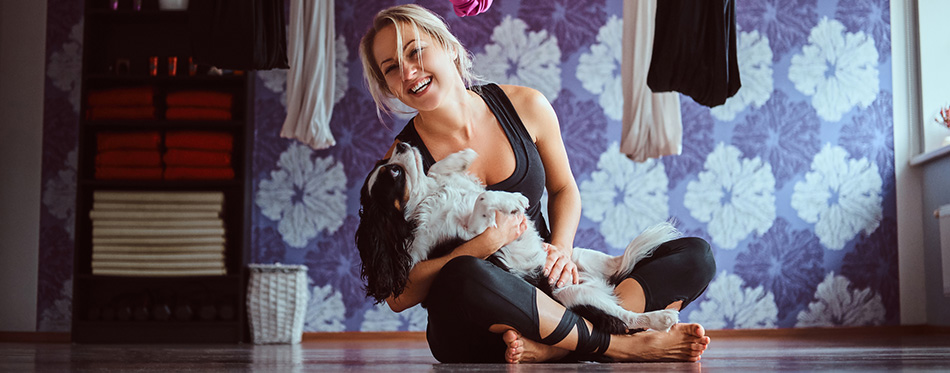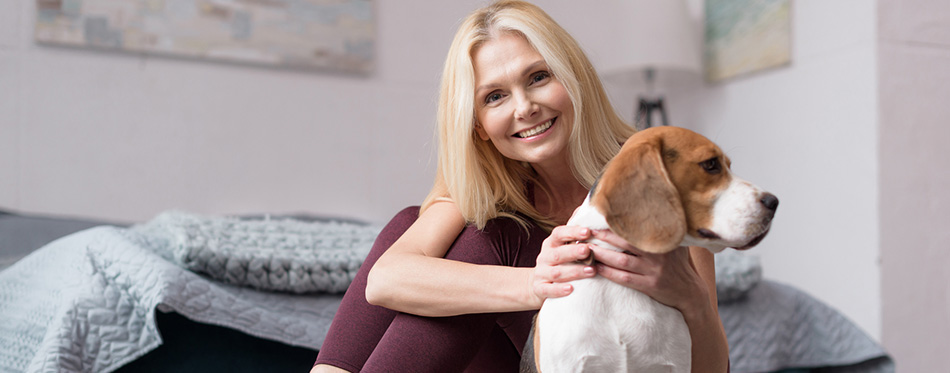Yoga is an ancient practice that is tweaked continually to meet the needs of its modern practitioners. While the basic moves may not have changed, the surroundings, approach, and reasons for undertaking yoga are always in flux. Some of the most recent updates to yoga practice sound like nothing more than a bad joke, such as goat yoga. However, some are very real and hold significant benefits for those who partake. One such modern take on yoga practice is dog yoga.
This is not a joke. Dog yoga is real and has numerous benefits for both you and your pet pooch. The benefits of dog yoga include improved bonding with your pet, socialization, and trust-building. There is even evidence to suggest that yoga can help calm hyperactive dogs and soothe those that become easily stressed. When you think about it, dogs complete several different yoga poses in their everyday movements and stretches. So, it makes sense that if there is one exercise class that you can do together, it is doggy yoga.
You may also like our article on Dog Treadmills.

How to do Yoga With Your Dog
While doing yoga with your fur buddy can be fun and healthy, this does not mean that you can simply rock up to any yoga class with your dog and join in. You need to find classes that are specifically for dogs and their owners. These classes are commonly known as doga. It is a good idea to research such classes before you decide to take your dog along. There are generally two types of dog yoga classes. One where you do yoga as usual and the dogs mill around and socialize with each other. The second type involves the dogs doing poses with their owners. The poses modified where necessary to make them suitable for your doggy to do.
When looking into doga classes, check for breed and size restrictions. Separate classes might be run for large and small dogs to help prevent issues between different breeds. There may also be restrictions on what dog breeds can attend classes. Also, check what is expected of you and your dog. How is your dog expected to behave during classes? Do they need to be comfortable off the leash? What happens if your dog misbehaves during a class?
Also, consider whether your dog is ready for such a class. Do they enjoy being around people and other dogs? Are they likely to want to join in, or will they spend the whole time asleep in a corner? It is worth checking the number of class participants and the size of the space that is used. If your dog doesn’t particularly like large crowds, then a small class is probably the best option.
Once you have found the right class and the right teacher it is vital that you allow yourself to be led by your dog. Yoga is not something you can force, and if they are not engaged or interested, then pushing them could lead to injury or at least a very upset pooch.
Know your own limitations as well. If a pose requires you to lift your dog, be guided by your ability. If you are uncomfortable with the weight of your dog, even if it is small, then don’t lift them.
As with any indoor activity, ensure that your dog has had plenty of toileting opportunities before you start. Praise your dog often and provide appropriate dog treats at the end of the season or between poses if appropriate.
Practicing Dog Yoga at Home
Of course, you do not need to go to a class to experience the benefits of doga. You can just as easily practice in the comfort of your home. This reduces the risk of conflict with other dogs and means that you have a safe, quiet space to spend time practicing and building bonds with your dog. However, if you practice at home, remember that many of the same guidelines still apply. It is not enough to simply search for images of dogs doing yoga poses and then trying to recreate them.
You must still be led by your dog and not try to lift dogs that are too heavy or who do not enjoy being off the ground. If you have a larger dog, try poses that allow you to stretch alongside them. Include natural rest periods during quieter poses as this is when you are more likely to bond with your dog as well as experiencing the health benefits of yoga.
If the thought of your dog joining you on the yoga mat does not appeal, then there are other ways of incorporating yoga into your daily routine with your dog. Consider ways that you can incorporate poses and stretches into your daily walks. Something as simple as squatting to retrieve their ball rather than bending will benefit you without inconveniencing your dog.

Yoga is a form of meditation. A chance to be in the moment, to let go of the stresses and strains of the world. It is possible to reach a similar state when out walking with your dog, especially if you choose a quiet time to walk or a big empty space to play where all there is to focus on is you, your pet pooch, and where the ball went.
Whichever way you decide to approach the idea of dog yoga, the key to success is not to panic. If your dog doesn’t want to join in, then leave them to watch or sleep. If you are in a class and they leave a smelly present on the floor, clean it up and move on. You do need a sense of humor to attempt dog yoga, particularly in a class, but as laughter is supposedly the best medicine, maybe that is a good thing.
Source:
- Doga: Yoga for Dogs – PetMD

